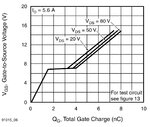Veketti
Full Member level 3

Dear All,
I'm building a circuit using 555 chip to open and close injector. My problem is that if resistor R5 is any smaller value than ~700ohm, it gets very warm. If it's like 100ohm, it gets so hot that you cant touch it. Is it normal or is there something wrong with my circuit? I'm driving this circuit by 12V from J2. If I leave Q1 mosfet unconnected R5 wont heat up. With current values R5 820ohm and R6 4000ohm temps are bearable. I tried to increase R8 value if it has any effect on R5 heating but it didn't.
Sorry that it looks bit stupid as eg. switch is illustrated as two pins (J4 & J5) as I'm installing leads from there to the actual switch. And layout is awful as I'm not yet good on arranging components.. :lol: Is there other big no no's or errors?

Thank you in advance.
I'm building a circuit using 555 chip to open and close injector. My problem is that if resistor R5 is any smaller value than ~700ohm, it gets very warm. If it's like 100ohm, it gets so hot that you cant touch it. Is it normal or is there something wrong with my circuit? I'm driving this circuit by 12V from J2. If I leave Q1 mosfet unconnected R5 wont heat up. With current values R5 820ohm and R6 4000ohm temps are bearable. I tried to increase R8 value if it has any effect on R5 heating but it didn't.
Sorry that it looks bit stupid as eg. switch is illustrated as two pins (J4 & J5) as I'm installing leads from there to the actual switch. And layout is awful as I'm not yet good on arranging components.. :lol: Is there other big no no's or errors?

Thank you in advance.






